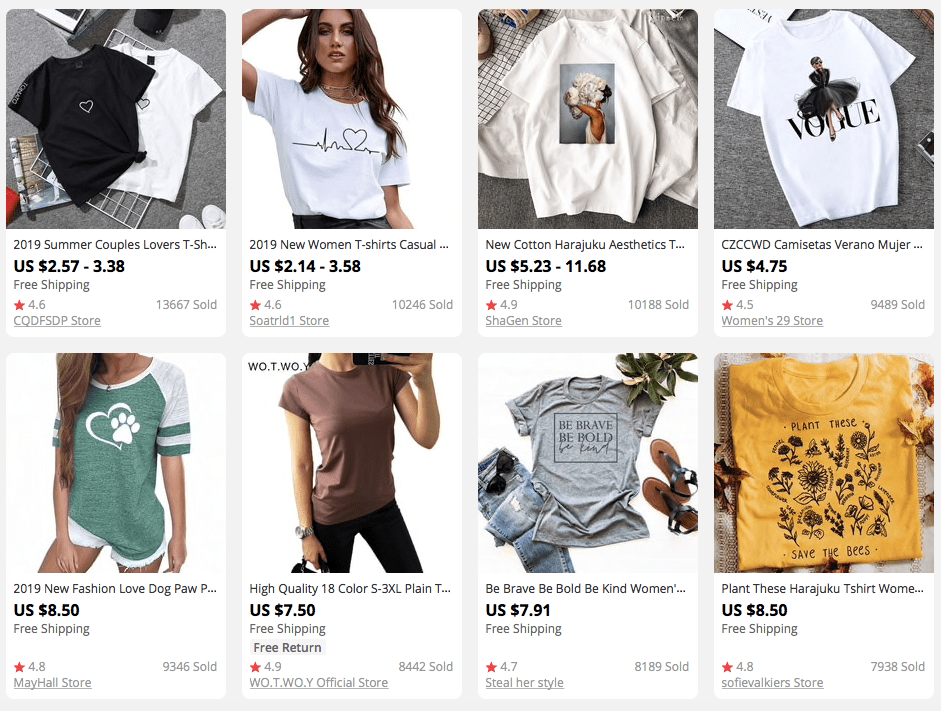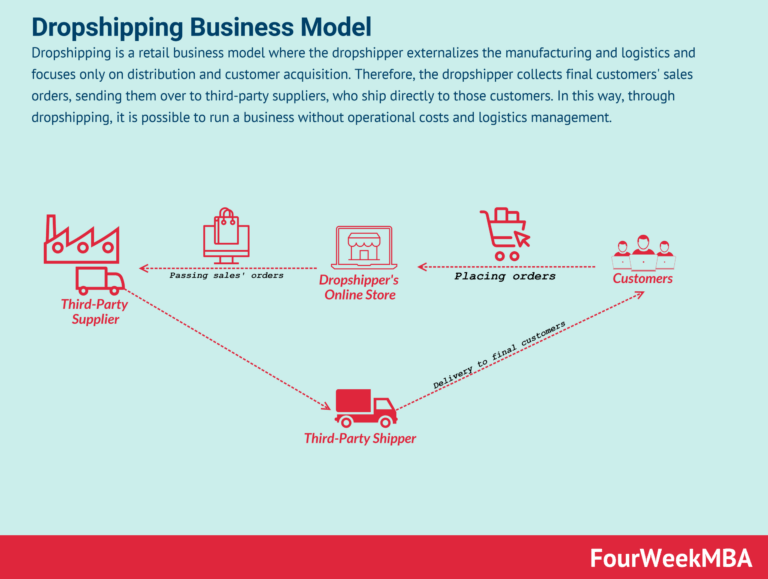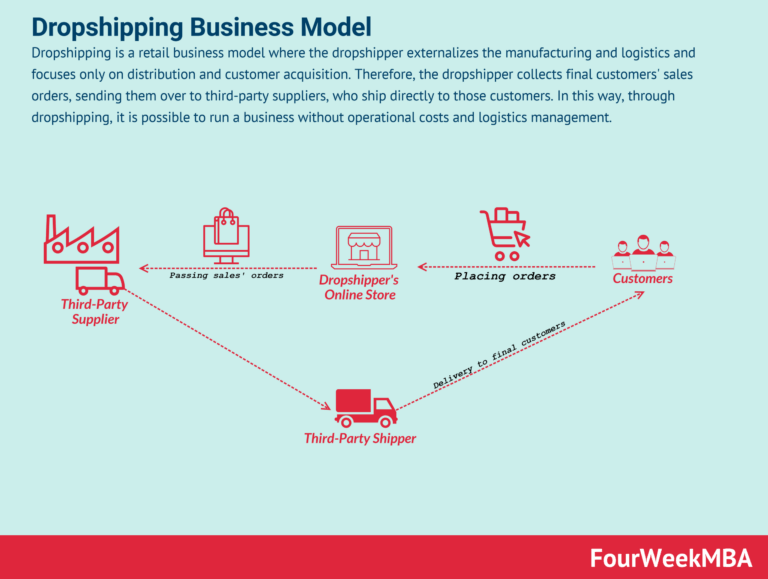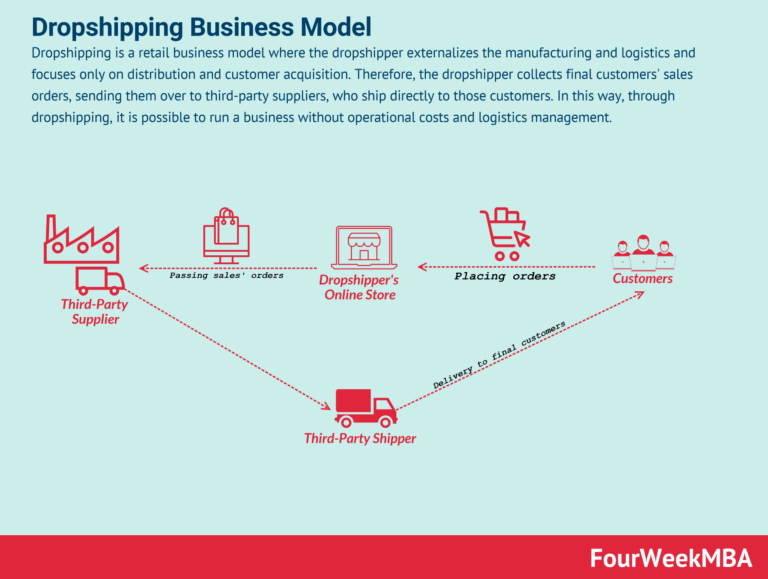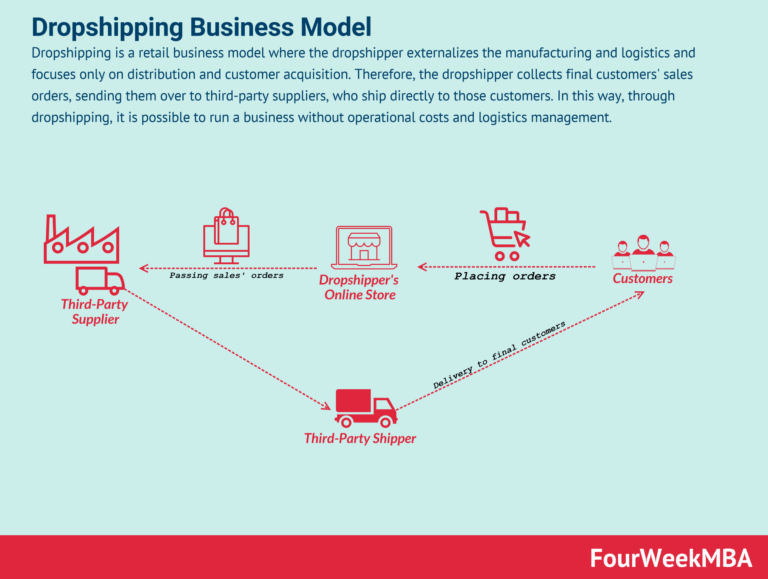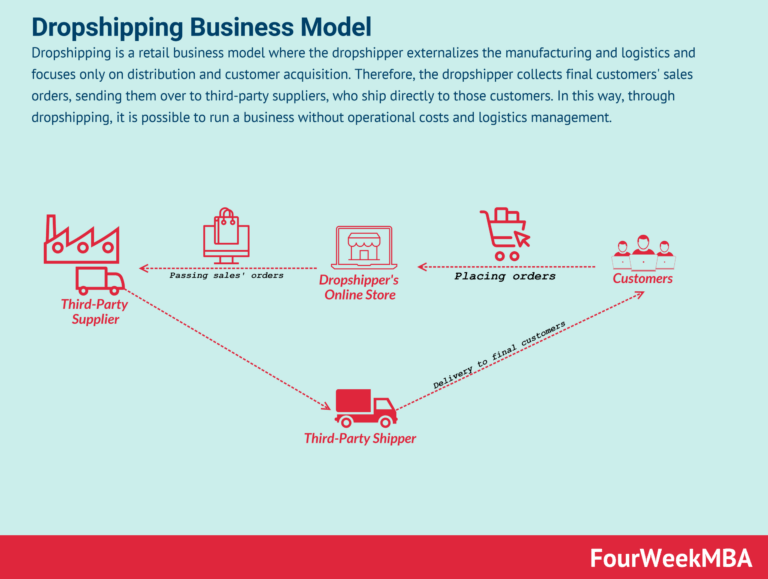What Is Dropshipping and How Does It Work? (2025)
Your Complete Guide to t shirt dropshipping
Welcome to Your Entrepreneurial Journey
Congratulations on taking the first step towards launching your own online business! If you’re reading this, you likely have a dream of becoming an entrepreneur, and the world of t-shirt dropshipping offers a fantastic opportunity to turn that dream into a reality.
At its core, dropshipping is a retail fulfillment method where you, the seller, don’t keep the products you sell in stock. Instead, when you sell a product, you purchase the item from a third-party supplier who ships it directly to your customer. This means you can start your business without the burden of inventory costs or the complexities of order fulfillment. The appeal of dropshipping lies in its low startup costs and flexibility, making it an ideal choice for beginners and aspiring entrepreneurs. You can run your business from anywhere, experiment with various designs, and quickly adapt to market trends—all while focusing on what truly matters: building your brand.
In this comprehensive guide, we will walk you through every essential step of the t-shirt dropshipping process. From finding the right products and designing your unique t-shirt graphics to selecting a reliable dropshipping supplier and launching your online store, we’ve got you covered. You’ll learn about the best platforms available for dropshipping, how to create eye-catching designs, and the marketing strategies that will help you attract your first customers. We’ll also explore tips for optimizing your online store for conversions and maximizing your profit margins.
By the end of this guide, you’ll have a complete roadmap that empowers you to make your first sale and set the foundation for your growing business. Remember, every successful entrepreneur started somewhere, and with the right knowledge and determination, you can carve your own path in the e-commerce landscape.
So, take a deep breath and embrace this exciting journey. Your dream of running a successful t-shirt dropshipping business is within reach. Let’s turn your vision into reality, one step at a time!
What You’ll Learn In This Guide
- Your Complete Guide to t shirt dropshipping
- How Does Dropshipping Actually Work? A Step-by-Step Breakdown
- The Pros and Cons of Dropshipping: Is It Right for You?
- Step 1: Finding a Profitable Niche and Winning Products
- Step 2: Choosing the Right Dropshipping Suppliers
- Step 3: Building Your Online Store
- Step 4: Marketing Your Dropshipping Business to Get Sales
- Common Mistakes to Avoid as a Beginner
- Frequently Asked Questions (FAQs) about t shirt dropshipping
- Conclusion: Your Next Steps to Launching Your Business
- Important Disclaimer
How Does Dropshipping Actually Work? A Step-by-Step Breakdown
Understanding the Dropshipping Model: A Step-by-Step Breakdown
If you’re considering starting a t-shirt dropshipping business, understanding how the dropshipping model works is crucial. This model allows you to sell products without holding any inventory, making it an attractive option for aspiring entrepreneurs. Let’s break down the process step-by-step:
- Customer Places an Order on Your Online Store
-
When a customer visits your e-commerce site and decides to purchase a t-shirt, they select their desired design and size and add it to their cart. Once they proceed to checkout and complete the payment process, the order is officially placed. This step is essential, as it initiates the entire dropshipping cycle.
-
You Receive the Payment
-
After the customer completes their purchase, the payment is processed through your chosen payment gateway (like PayPal, Stripe, or credit card processing). At this point, you’ll see the funds in your account, minus any transaction fees charged by the payment processor. This is a key moment where you begin to see the financial flow into your business.
-
You Forward the Order to Your Supplier

-
Once the order is confirmed, you then take the next step by forwarding the order details to your dropshipping supplier. This can often be done automatically through integrated software that connects your online store to your supplier (like Printify or Printful). Here, you provide the necessary information, including the product type, design, size, and shipping address. It’s like being the digital storefront and middleman, ensuring that the right product gets to the right customer without you ever touching the inventory.
-
The Supplier Ships the Product Directly to the Customer
- After receiving your order, the supplier takes over. They print the design on the t-shirt, package it, and ship it directly to your customer. This is one of the most significant advantages of dropshipping: you don’t have to manage inventory or shipping logistics. The supplier handles everything from production to delivery, allowing you to focus on marketing and growing your business.
The Flow of Money and Goods
To illustrate the flow of money and goods in a dropshipping model, think of it as a relay race:
-
Money Flow: When the customer pays for the t-shirt, the money flows from the customer to you. After you send the order to your supplier, you will then pay them the wholesale price of the t-shirt (which is typically lower than what you charged the customer). The difference between the retail price (what the customer paid) and the wholesale price (what you pay the supplier) is your profit margin.
-
Goods Flow: The goods flow directly from the supplier to the customer, bypassing you entirely. This means you don’t need to worry about storage, packing, or shipping—your supplier manages all of that. You act as a facilitator, ensuring the customer receives their order efficiently.
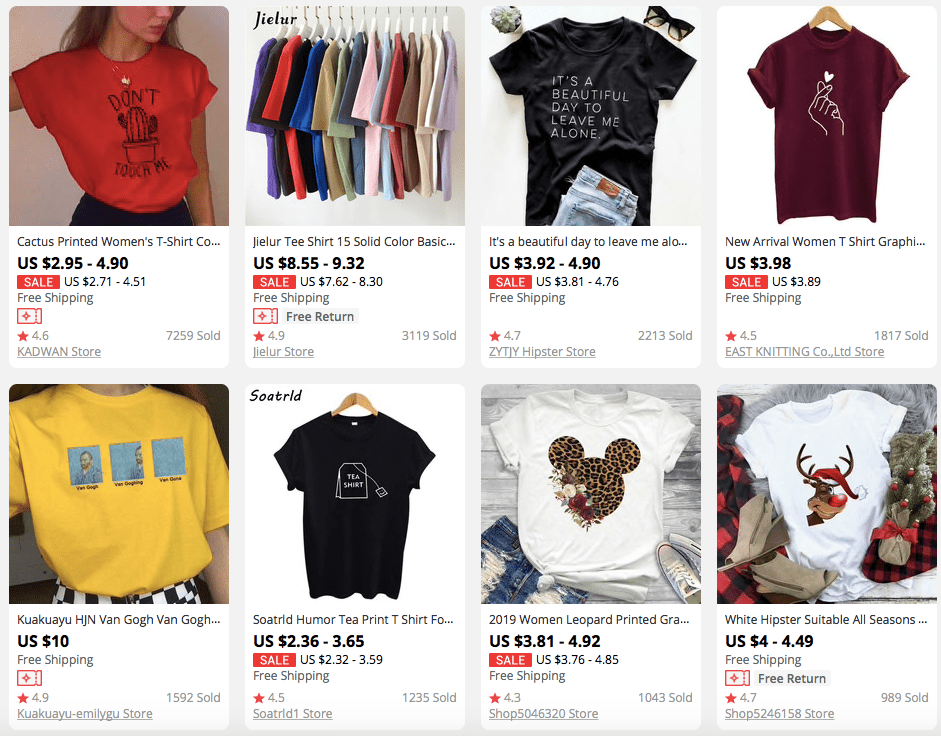
Benefits of the Dropshipping Model
- Low Startup Costs: Since you don’t need to buy inventory upfront, you can start your t-shirt business with minimal investment.
- Flexibility: You can easily test new designs and products without the risk of unsold inventory.
- Focus on Marketing: With logistics out of the way, you can dedicate more time to marketing your brand and connecting with your audience.
Conclusion
The dropshipping model is a powerful way to enter the e-commerce space, especially for beginners looking to start a t-shirt business. By understanding the step-by-step process and the flow of money and goods, you can effectively manage your online store and focus on what really matters: building your brand and satisfying your customers. Remember, each order is an opportunity to grow your business, so approach each step with enthusiasm and a strategic mindset!
The Pros and Cons of Dropshipping: Is It Right for You?
Advantages of Dropshipping (Pros) | Challenges of Dropshipping (Cons)
| ————————————- | ————————————- |
| 1. Low Financial Risk: You don’t need to invest heavily in inventory upfront. Only pay for products once you’ve made a sale. | 1. Low Profit Margins: Due to high competition, profit margins can be tight, often ranging from 10% to 30%. |
| 2. Minimal Overhead Costs: No need for a physical store or warehousing, significantly reducing operational costs. | 2. High Competition: The low barrier to entry means many entrepreneurs are vying for the same market, making it harder to stand out. |
| 3. Wide Product Range: You can offer a variety of t-shirt designs and styles without the risk of unsold inventory. | 3. Dependence on Suppliers: Your business relies on third-party suppliers for product quality and shipping, which can lead to issues if they fail to deliver. |
| 4. Flexible Location: Operate your business from anywhere with an internet connection, providing great flexibility and lifestyle benefits. | 4. Customer Service Challenges: Handling customer complaints and returns can be more complex when products are shipped directly from suppliers. |
| 5. Easy to Scale: As demand grows, you can quickly add more products and expand your store without worrying about logistics. | 5. Shipping Complexities: If you work with multiple suppliers, managing shipping costs and delivery times can become complicated. |
| 6. Test New Products Easily: Quickly experiment with new designs and trends without committing to bulk purchases. | 6. Limited Control Over Branding: Many suppliers have set branding options, which can hinder your ability to create a unique brand identity. |
| 7. Automation Opportunities: Many dropshipping platforms integrate seamlessly with e-commerce tools, allowing for automation of order processing and inventory management. | 7. Quality Control Issues: You may face inconsistencies in product quality, which can lead to customer dissatisfaction and returns. |
Understanding the Key Advantages of Dropshipping
1. Low Financial Risk
One of the most appealing aspects of dropshipping is the minimal financial risk involved. As an aspiring entrepreneur, you can enter the t-shirt market without a hefty upfront investment. You only pay for the products after you’ve made a sale, which means you don’t have to worry about unsold inventory eating into your profits. This model allows you to test different designs and styles without the fear of financial loss, making it an ideal starting point for beginners.
2. Minimal Overhead Costs
With dropshipping, you can run your business from the comfort of your home without the need for a physical storefront or warehouse. This significantly lowers your overhead costs, allowing you to allocate more resources to marketing and product development. Since you don’t need to manage inventory, you can focus on building your brand and engaging with customers.
3. Wide Product Range
Dropshipping gives you the flexibility to offer a diverse range of t-shirt designs without the risk of overstock. You can easily add new products to your store based on market trends, customer feedback, or seasonal demands. This adaptability is crucial in the fast-paced e-commerce landscape, allowing you to stay relevant and appealing to your target audience.
Recognizing the Challenges of Dropshipping
1. Low Profit Margins
While dropshipping offers many advantages, it often comes with lower profit margins. High competition in the t-shirt market can drive prices down, making it challenging to maintain a healthy profit. As you set your prices, you’ll need to be strategic about balancing affordability for your customers with profitability for your business. This can be a significant hurdle, especially for beginners who may not yet have established a brand presence.
2. Dependence on Suppliers
Your dropshipping business relies heavily on third-party suppliers. If they fail to deliver quality products or timely shipping, it can adversely affect your reputation and customer satisfaction. As an entrepreneur, it’s vital to choose reliable suppliers and maintain open lines of communication to mitigate potential issues.
3. Customer Service Challenges
Managing customer service can be more complex in a dropshipping model. When a customer faces an issue with a product, you may not have immediate control over the solution since the supplier is responsible for fulfillment. This can lead to delays in resolving complaints, potentially impacting customer loyalty. Therefore, investing in robust customer service strategies and clear communication with your suppliers is essential.

Conclusion
Dropshipping can be an effective way to enter the t-shirt business, especially for aspiring entrepreneurs looking for a low-risk, flexible model. However, it’s crucial to weigh both the advantages and challenges to determine if it aligns with your business goals and capabilities. By understanding the dynamics of dropshipping, you can make informed decisions that will set your t-shirt business up for success. As you embark on this journey, remember that persistence, adaptability, and a focus on quality will be key to overcoming the challenges you may face.
Step 1: Finding a Profitable Niche and Winning Products
What Makes a Good Niche?
Finding a profitable niche is the foundation of a successful t-shirt dropshipping business. A good niche meets the following criteria:
-
Passion and Interest: Choose a niche that excites you. This will keep you motivated and engaged, making it easier to create compelling designs and marketing strategies.
-
Market Demand: A profitable niche should have a clear demand. Use tools like Google Trends to see if the interest in your niche is growing, stable, or declining. A steady or rising trend indicates potential profitability.
-
Competition Level: While some competition is healthy, overly saturated niches can be challenging for beginners. Look for niches with moderate competition where you can carve out your own space.
-
Target Audience: Understand who your target customers are. A well-defined audience allows you to tailor your designs and marketing efforts effectively.
-
Profit Margins: Ensure the niche allows for a healthy profit margin. T-shirts typically have a good markup; however, consider the costs of production, shipping, and marketing when calculating potential profits.
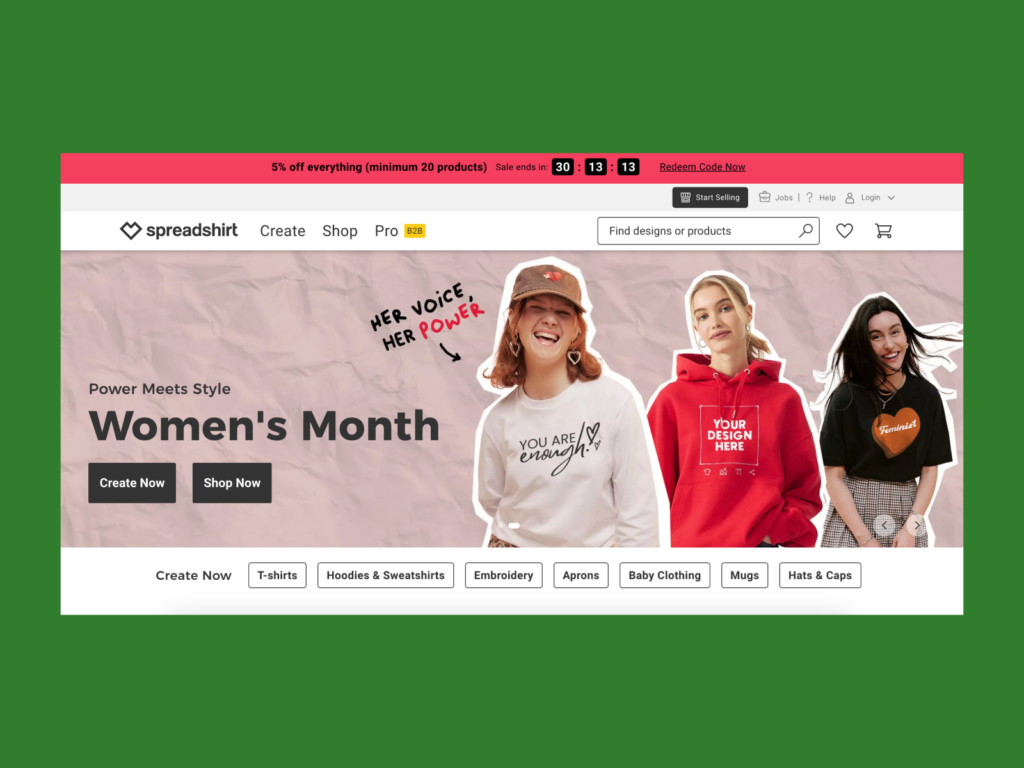
How to Brainstorm Niche Ideas
Brainstorming niche ideas is an essential step in your entrepreneurial journey. Here are some effective techniques:
-
Personal Interests and Hobbies: Start by listing your hobbies, interests, and passions. These can often translate into unique niche markets. For instance, if you love hiking, consider creating t-shirts featuring hiking quotes or nature designs.
-
Trend Analysis: Use trend analysis tools like Google Trends, Pinterest Trends, or TikTok to identify what’s currently popular. Look for emerging trends that haven’t yet saturated the market.
-
Online Communities: Engage with online communities such as Reddit, Facebook Groups, or niche forums. Observe discussions and identify pain points, interests, or themes that resonate with members.
-
Keyword Research: Use keyword research tools like Ubersuggest or SEMrush to find popular search terms related to your interests. This can help identify potential niches with a demand.
-
Competitor Analysis: Look at successful t-shirt businesses within your areas of interest. Analyze their offerings, customer engagement, and marketing strategies. Identify gaps or unique angles you can capitalize on.

Validating Your Niche
Once you’ve brainstormed potential niches, it’s crucial to validate them before diving in. Here are some methods to validate your niche:
-
Market Research: Use surveys and polls to gather feedback from your target audience. Platforms like SurveyMonkey or Google Forms can help you gauge interest in your niche ideas.
-
Social Media Engagement: Create social media accounts focused on your niche and post relevant content. Monitor engagement levels (likes, shares, comments) to assess interest.
-
Test with Minimal Viable Products (MVPs): Before fully committing, create a few designs and launch them on platforms like Etsy or Redbubble. Measure sales and customer feedback to see if there’s genuine interest.
-
Analyze Competitor Performance: Use tools like SimilarWeb or SEMrush to analyze traffic and engagement metrics of competitors. High traffic and engagement levels can indicate a viable niche.
-
Consider the Longevity: Think about whether your niche is a fad or has the potential for long-term relevance. Niches that align with lifestyle trends or cultures often have better staying power.
Methods for Finding Winning Products
Identifying winning products is crucial for your t-shirt dropshipping success. Here are some effective methods to find those standout items:

-
Supplier Marketplaces: Utilize print-on-demand platforms like Printify and Printful. These platforms often showcase trending designs, giving you insights into what’s popular and selling well.
-
Social Media Trends: Monitor platforms like Instagram, Pinterest, and TikTok. Look for viral trends, hashtags, or popular influencers within your niche. This can help you identify what types of designs resonate with your audience.
-
Use Product Research Tools: Leverage tools like Jungle Scout, Helium 10, or Alura. These tools can provide insights into sales data, trends, and customer feedback, allowing you to identify winning products quickly.
-
Criteria for a Good Dropshipping Product:
- Price Point: Aim for products with a retail price between $20 and $40. This price range is often perceived as reasonable by consumers, allowing for healthy profit margins.
- Unique and Hard-to-Find: Products that are not easily found in local stores tend to perform better in dropshipping. This uniqueness can create a sense of exclusivity and drive sales.
-
Problem Solving: T-shirts that solve a problem or convey a message can be highly appealing. Think of designs that resonate with specific causes, humor, or relatable scenarios.
-
Customer Feedback and Reviews: Pay attention to customer reviews on competitor products. Identify what customers like or dislike, and use this feedback to refine your own designs.
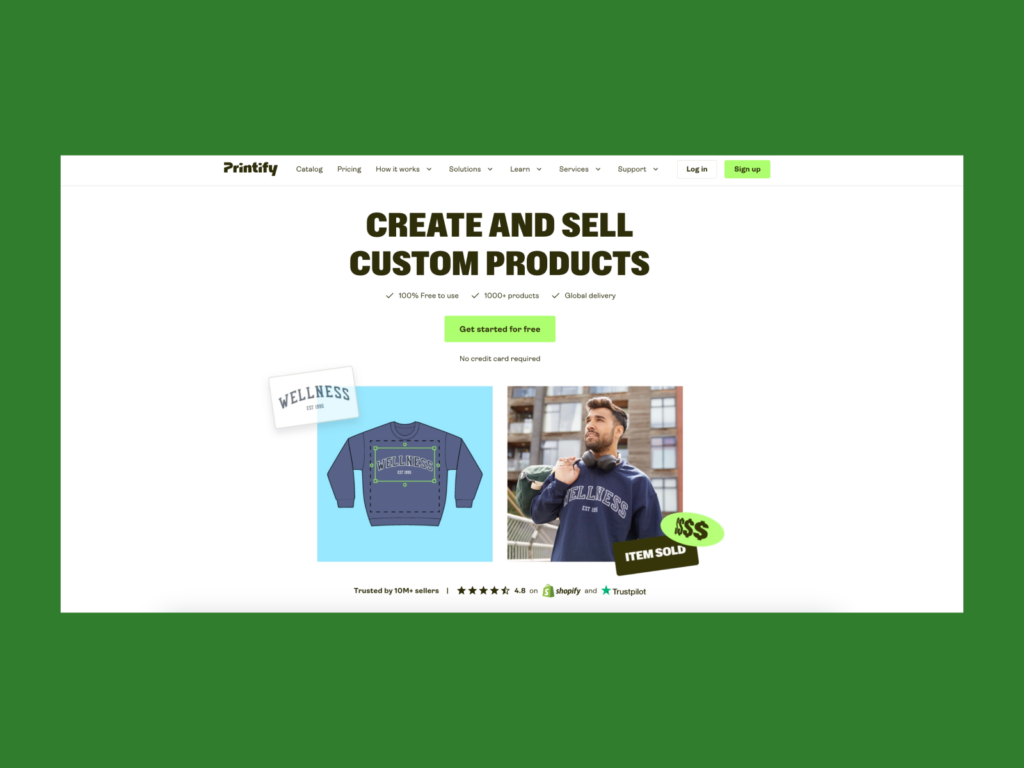
-
Seasonal and Event-Based Products: Leverage holidays, events, or seasons to create timely designs. T-shirts for holidays like Christmas, Halloween, or events like Pride Month can generate significant sales spikes.
Conclusion
Finding a profitable niche and winning products for your t-shirt dropshipping business is an exciting journey. By understanding what makes a good niche, brainstorming effectively, validating your ideas, and using the right methods to find products, you can lay a strong foundation for your online venture. Remember, the key is to stay adaptable, continuously research, and listen to your customers. With persistence and creativity, you can build a thriving t-shirt business that reflects your passions and resonates with your audience.
Step 2: Choosing the Right Dropshipping Suppliers
Understanding Your Options for Dropshipping Suppliers
Choosing the right dropshipping supplier is a crucial step in launching your t-shirt business. The right partner can streamline your operations, enhance product quality, and improve customer satisfaction. In this section, we will explore some of the most popular platforms for dropshipping t-shirts, including AliExpress, CJ Dropshipping, and USA-Based Suppliers, while discussing their advantages and disadvantages.
AliExpress
Pros:
– Wide Variety of Products: AliExpress boasts a vast selection of t-shirt designs and styles from numerous suppliers worldwide, making it easy to find unique products.
– Low Prices: Due to its global supplier network, you can often find t-shirts at competitive prices, allowing for higher profit margins.
– No Upfront Costs: You don’t need to purchase inventory upfront, which minimizes your financial risk.
– Easy Integration: Many e-commerce platforms, such as Shopify, offer easy integration with AliExpress through apps like Oberlo.
Cons:
– Long Shipping Times: Depending on the supplier’s location, shipping can take several weeks, which may lead to customer dissatisfaction.
– Inconsistent Quality: The quality of products can vary significantly between suppliers, making it essential to vet each one carefully.
– Communication Barriers: Language differences and time zones can complicate communication with suppliers, potentially leading to misunderstandings.
CJ Dropshipping
Pros:
– Quality Control: CJ Dropshipping has a more rigorous vetting process for suppliers, which helps ensure product quality.
– Faster Shipping: They offer multiple warehouses in different countries, allowing for quicker shipping times, particularly in the U.S. and Europe.
– Custom Branding Options: CJ Dropshipping allows you to customize packaging and branding, giving your products a professional touch.
– Comprehensive Support: They provide dedicated customer support and resources for new dropshippers, making it easier to navigate the process.
Cons:
– Higher Costs: While the quality is generally better, prices may be higher compared to AliExpress, which could affect your profit margins.
– Limited Product Range: Although they offer a wide variety of products, the selection is not as extensive as that of AliExpress.
– More Complex Integration: While integrations are available, they may require a bit more technical knowledge than some other platforms.
USA-Based Suppliers
Pros:
– Fast Shipping: Suppliers based in the U.S. typically offer faster shipping times, often within 3-5 business days, which can lead to higher customer satisfaction.
– Better Quality Assurance: Many U.S.-based suppliers maintain higher quality control standards, leading to more consistent product quality.
– Customer Service: These suppliers often provide better customer service, making communication easier and resolving issues faster.
Cons:
– Higher Prices: Generally, products from U.S. suppliers come at a premium, which can eat into your profit margins.
– Limited Variety: While there are reputable suppliers, the range of styles and designs may not be as extensive as international platforms.
– Stock Availability: Some U.S. suppliers may have limited stock, leading to potential delays or cancellations if products are unavailable.
What to Look for in a Good Supplier
When selecting a dropshipping supplier, it’s essential to have a clear checklist to ensure you choose a reliable partner. Here’s what to consider:
-
Communication: Look for suppliers who are responsive and communicate clearly. Quick and effective communication can save you a lot of headaches down the line.
-
Shipping Times: Evaluate the average shipping times and ensure they align with your customer expectations. Fast shipping can significantly enhance customer satisfaction.
-
Product Quality: Order samples to assess the quality of products before listing them in your store. High-quality products reduce return rates and improve brand reputation.
-
Return Policies: Understand the supplier’s return and refund policies. A flexible return policy can help you manage customer expectations and mitigate losses.
-
Pricing Structure: Compare the pricing of various suppliers to ensure you can maintain healthy profit margins. Be mindful of hidden fees that might impact your bottom line.
-
Integration Capabilities: Check if the supplier can easily integrate with your e-commerce platform. Smooth integration can save time and streamline order processing.
-
Location: Consider the supplier’s location, as this can affect shipping times and costs. U.S.-based suppliers may offer better shipping options for U.S. customers.
-
Reputation and Reviews: Research supplier reviews and testimonials from other dropshippers. A strong reputation can often indicate reliability and quality.
Conclusion
Selecting the right dropshipping supplier is a pivotal decision that can influence your t-shirt business’s success. By understanding the pros and cons of platforms like AliExpress, CJ Dropshipping, and U.S.-based suppliers, you can make an informed choice that aligns with your business goals. Remember to use the checklist provided to evaluate potential suppliers critically. With careful selection, you can set a strong foundation for your t-shirt dropshipping venture, allowing you to focus on designing and marketing your unique products. Happy dropshipping!
Step 3: Building Your Online Store
Getting Started with Shopify for Your T-Shirt Dropshipping Store
Building an online store for your t-shirt dropshipping business is an exciting venture, and Shopify is one of the most popular platforms for this purpose. Its user-friendly interface, extensive support, and vast array of features make it ideal for beginners and entrepreneurs. Below, you will find a step-by-step guide to setting up your Shopify store, from choosing a plan to installing essential apps.
1. Choosing a Plan
The first step in building your online store is selecting a Shopify plan that suits your needs. Shopify offers several pricing tiers, including:
- Basic Shopify: Best for beginners, with all the essentials needed to create an online store.
- Shopify: Includes additional features like professional reports and gift cards.
- Advanced Shopify: Offers advanced reporting and third-party calculated shipping rates.
To start, you can take advantage of Shopify’s 14-day free trial. This allows you to explore the platform without any upfront investment. During this period, focus on familiarizing yourself with the dashboard and available features, as well as planning your store’s layout and product offerings.
2. Picking a Theme
Once you’ve selected a plan, it’s time to pick a theme for your store. Shopify offers a variety of free and paid themes that can be customized to fit your brand’s aesthetic. Here’s how to choose the right one:
- Relevance: Choose a theme that complements your t-shirt designs. Look for themes that highlight product images effectively.
- Mobile Responsiveness: Ensure the theme is mobile-friendly, as a significant portion of your customers will shop from their phones.
- Customization Options: Select a theme that allows you to customize colors, fonts, and layouts to align with your brand identity.
To install a theme, go to the “Online Store” section in your Shopify dashboard, click on “Themes,” and then browse the Shopify Theme Store. Once you find one you like, click “Add” to install it.
3. Setting Up Essential Pages
Now that your theme is in place, it’s crucial to set up essential pages that provide information to your customers and build trust. Here are the key pages you should create:
- About Us: Share your brand story and mission. This helps customers connect with your brand on a personal level.
- Contact Page: Provide multiple ways for customers to reach you, including an email address, contact form, and social media links.
- Policies: Clearly outline your shipping, return, and privacy policies. This transparency fosters trust and reduces customer inquiries.
You can create these pages by navigating to the “Pages” section in your Shopify dashboard. Use clear and concise language, and don’t hesitate to inject some personality into your content.
4. Installing Key Apps
To enhance your store’s functionality, installing key apps is essential. Here are some recommended apps for a t-shirt dropshipping store:
- DSers or CJ Dropshipping: These apps allow you to import products from suppliers directly into your Shopify store. They also automate order fulfillment, making the dropshipping process seamless.
- Printful or Printify: If you’re focused on print-on-demand, these apps integrate with Shopify to allow you to design and sell custom t-shirts without holding inventory.
- SEO Manager: Optimize your store for search engines to drive organic traffic by using an SEO app that helps you improve your site’s visibility.
- Klaviyo: Use this email marketing app to build customer relationships through targeted email campaigns and automation.
To install an app, visit the Shopify App Store, search for the app you want, and click “Add app.” Follow the prompts to complete the installation.
5. Setting Up Payment Gateways
Once your store is ready to go, you need to set up payment gateways to process transactions. Shopify supports various payment options, including:
- Shopify Payments: The easiest way to accept credit cards directly on your store.
- PayPal: Widely used and trusted by customers.
- Stripe: A popular alternative for processing online payments.
To set up payment gateways, go to “Settings” in your Shopify dashboard, then click on “Payments.” Follow the instructions to enable the gateways you want to use. Remember to test your payment system to ensure everything works smoothly before launching.
Exploring WooCommerce as an Alternative
While Shopify is an excellent choice for beginners, it’s worth mentioning that WooCommerce is another popular option for those who prefer a more customizable platform. WooCommerce is a WordPress plugin that allows you to turn a WordPress site into an online store. It offers a wide range of themes and plugins, making it highly adaptable. However, it may require a steeper learning curve compared to Shopify.
Conclusion
Building your online t-shirt dropshipping store with Shopify involves several key steps, from choosing the right plan to setting up essential pages and payment gateways. By following this guide, you can create a professional and efficient store that appeals to your target audience. Remember, the journey of entrepreneurship is a marathon, not a sprint. Take your time, test different strategies, and don’t hesitate to seek help from communities or mentors. Your dropshipping business is within reach, and with Shopify, you have the tools to succeed!
Step 4: Marketing Your Dropshipping Business to Get Sales
Social Media Marketing (TikTok & Instagram)
Social media is an essential tool for any dropshipping business, especially in the visually-driven t-shirt market. Platforms like TikTok and Instagram can help you connect with your target audience, showcase your products, and drive traffic to your store. Here’s how to make the most of these platforms:
1. Create Engaging Visual Content
- Tip: Use high-quality images and videos that highlight your t-shirts in creative ways. Consider lifestyle shots where models wear your designs in relatable settings.
- Example: If you have a humorous t-shirt line, create short, funny skits on TikTok where the shirts play a central role.
2. Leverage User-Generated Content
- Tip: Encourage your customers to share photos wearing your t-shirts on social media. You can create a specific hashtag for your brand to track these posts.
- Example: Run a contest where customers share their photos in your t-shirts for a chance to win a gift card or a free product.
3. Collaborate with Influencers
- Tip: Partner with micro-influencers who align with your brand values. They often have highly engaged audiences and can promote your products authentically.
- Example: Send free samples to influencers in the fashion niche and ask them to create content featuring your t-shirts. This can lead to increased visibility and sales.
4. Utilize Instagram Stories and Reels
- Tip: Use Instagram Stories and Reels to showcase new arrivals, behind-the-scenes content, or customer testimonials. These features are designed for quick engagement and can drive traffic to your store.
- Example: Create a series of “T-Shirt of the Day” reels, where you highlight a different design each day, sharing its inspiration and where to buy it.
5. Engage with Your Audience
- Tip: Respond to comments and messages promptly. Building a community around your brand encourages loyalty and repeat purchases.
- Example: Host a Q&A session on Instagram Live where you can discuss your designs, the inspiration behind them, and answer questions from potential customers.
Paid Advertising (Facebook/Instagram Ads)
Paid advertising can significantly amplify your reach and drive targeted traffic to your dropshipping store. Facebook and Instagram ads are particularly effective due to their extensive targeting capabilities.
1. Define Your Target Audience
- Tip: Use Facebook’s Audience Insights tool to understand your potential customers’ demographics, interests, and behaviors. Tailor your ads accordingly.
- Example: If your t-shirts cater to gamers, target audiences who follow gaming pages, play popular games, or are part of gaming communities.
2. Use Eye-Catching Visuals
- Tip: Invest time in creating visually appealing ad creatives. Use bright colors, high-quality images, and clear messaging to grab attention.
- Example: Create a carousel ad showcasing multiple t-shirt designs, highlighting unique features or quotes that resonate with your audience.
3. Test Different Ad Formats
- Tip: Experiment with various ad formats, including carousel ads, video ads, and collection ads, to see which performs best for your audience.
- Example: A video ad showing how your t-shirts are made or styled can be more engaging than a static image.
4. Optimize for Conversions
- Tip: Set up your ads to optimize for specific actions, such as website visits or purchases. Use Facebook Pixel to track conversions and retarget website visitors.
- Example: Create a retargeting ad for users who viewed specific t-shirts but did not purchase, offering a limited-time discount to encourage them to buy.
5. Monitor and Adjust Campaigns
- Tip: Regularly check the performance of your ads through Facebook Ads Manager. Look at metrics like CTR (Click-Through Rate) and conversion rates, and adjust your campaigns based on data.
- Example: If a particular ad set is performing well, consider increasing its budget or expanding the audience. Conversely, pause ads that are underperforming.
Search Engine Optimization (SEO)
SEO is a long-term strategy that can drive organic traffic to your dropshipping store. By optimizing your website for search engines, you can attract customers actively searching for t-shirts similar to yours.
1. Keyword Research
- Tip: Use tools like Google Keyword Planner or Ubersuggest to find relevant keywords related to your t-shirt designs. Focus on both short-tail and long-tail keywords.
- Example: If you sell graphic tees, target keywords like “funny graphic t-shirts” or “custom t-shirts for gamers.”
2. Optimize Product Descriptions
- Tip: Write unique and detailed product descriptions that incorporate your target keywords naturally. Avoid duplicate content, as it can harm your SEO rankings.
- Example: Instead of a generic description, write about the design inspiration, fabric quality, and potential styling options for each t-shirt.
3. Improve Site Speed and Mobile Friendliness
- Tip: Ensure your website loads quickly and is mobile-friendly. Google prioritizes sites that offer a good user experience, impacting your search rankings.
- Example: Use tools like Google PageSpeed Insights to analyze your site speed and make necessary improvements, such as optimizing images and reducing server response time.
4. Create Valuable Content
- Tip: Start a blog related to your niche. Write articles about t-shirt fashion trends, styling tips, or the significance of certain designs to attract organic traffic.
- Example: A blog post titled “Top 10 Graphic Tee Styles for Summer 2024” can drive traffic from users searching for summer fashion ideas.
5. Build Backlinks
- Tip: Reach out to fashion blogs, influencers, or websites in your niche for guest posting opportunities or collaborations that can earn you backlinks to your store.
- Example: Write a guest post on a popular fashion blog and include a link back to your store, improving your domain authority and search rankings.
Email Marketing
Email marketing remains one of the most effective ways to engage with your audience and drive sales. Building an email list allows you to communicate directly with potential customers.
1. Build Your Email List
- Tip: Use pop-ups or sign-up forms on your website to encourage visitors to subscribe to your newsletter. Offer incentives like discounts or exclusive content.
- Example: Offer a 10% discount on the first purchase for new subscribers to encourage sign-ups.
2. Segment Your Audience
- Tip: Segment your email list based on user behavior, purchase history, or preferences. This allows you to send targeted emails that resonate with specific groups.
- Example: Send personalized emails featuring new designs to customers who previously purchased similar styles.
3. Create Compelling Newsletters
- Tip: Design engaging newsletters that showcase new arrivals, promotions, or customer stories. Use eye-catching visuals and a clear call-to-action.
- Example: Highlight a “T-Shirt of the Month” in your newsletter, including a special discount for subscribers.
4. Automate Email Campaigns
- Tip: Utilize email automation tools to send welcome emails, abandoned cart reminders, and post-purchase follow-ups without manual effort.
- Example: Set up an automated email to remind customers who left items in their cart, offering a discount to encourage them to complete their purchase.
5. Analyze and Optimize
- Tip: Monitor your email marketing metrics, such as open rates and click-through rates, to identify what resonates with your audience. Adjust your content and strategies accordingly.
- Example: If you notice higher engagement with subject lines that include emojis, experiment with using them more frequently in your campaigns.
Conclusion
Marketing your dropshipping t-shirt business is a multifaceted endeavor that requires creativity, strategy, and consistency. By leveraging social media, paid advertising, SEO, and email marketing, you can build a strong brand presence, engage your audience, and drive sales. Remember, the key is to test different strategies, analyze results, and adapt your approach as you learn what works best for your unique business. With dedication and perseverance, you can turn your dropshipping venture into a successful online business.
Common Mistakes to Avoid as a Beginner
1. Choosing a Bad Niche
Mistake: Many beginners jump into dropshipping without thorough research on their niche. They often choose overly saturated markets or areas they are not passionate about, leading to poor sales and lack of motivation.
Solution: Conduct thorough market research to identify trending niches with sufficient demand and manageable competition. Utilize tools like Google Trends, social media insights, and keyword research to discover what potential customers are interested in. Focus on a niche that not only has market potential but also aligns with your interests or expertise, which will keep you engaged and motivated.
2. Not Testing Products
Mistake: New entrepreneurs often fail to test their products before fully committing to them. This can lead to poor sales and wasted marketing efforts on items that customers don’t want.
Solution: Start with a small selection of designs and test them in the market. Use social media ads to gauge interest or run a pre-launch campaign to collect feedback. This approach minimizes risk and allows you to refine your offerings based on actual customer preferences before scaling up.
3. Poor Customer Service
Mistake: Many beginners underestimate the importance of customer service. Neglecting customer inquiries or failing to resolve issues promptly can damage your reputation and lead to negative reviews.
Solution: Implement a robust customer service strategy from the outset. Use automated tools to manage inquiries efficiently and ensure that you are responsive to customer needs. Consider creating a comprehensive FAQ section on your website to address common questions. Prioritize customer satisfaction to build a loyal customer base and positive word-of-mouth.
4. Ignoring Shipping Times
Mistake: Some dropshippers overlook the importance of shipping times, leading to frustrated customers who expect quick delivery. Long or unpredictable shipping times can result in high cancellation rates and negative reviews.
Solution: Be transparent about shipping times on your website. Choose a dropshipping partner that offers reasonable fulfillment and shipping times. If you’re using suppliers from overseas, clearly communicate potential delays to your customers. Offering expedited shipping options can also enhance customer satisfaction.
5. Unrealistic Profit Expectations
Mistake: New dropshippers often have inflated expectations regarding profit margins, failing to account for costs such as advertising, transaction fees, and returns. This can lead to disappointment and financial strain.
Solution: Create a detailed business plan that outlines all potential costs associated with your dropshipping business. Understand your profit margins and set realistic sales targets. Regularly review and adjust your pricing strategy based on market conditions and competitor pricing to ensure profitability.
6. Not Utilizing Marketing Strategies
Mistake: Many beginners believe that simply listing products online will lead to sales. They often neglect the importance of effective marketing strategies to attract customers.
Solution: Develop a comprehensive marketing plan that includes social media marketing, email campaigns, and SEO strategies. Leverage platforms like Instagram and TikTok to showcase your t-shirt designs and engage with your audience. Consider using influencer partnerships or paid advertising to boost visibility and drive traffic to your online store.
7. Overcomplicating the Design Process
Mistake: Beginners sometimes make the mistake of overcomplicating their designs, leading to confusion and lack of appeal among potential buyers.
Solution: Keep your designs simple and focused. Use tools like Printful and Printify that offer easy-to-use design interfaces. Aim for designs that resonate with your target audience and align with current trends. Test multiple designs and gather feedback to find what works best.
8. Neglecting Brand Identity
Mistake: New dropshippers may overlook the importance of establishing a strong brand identity, which is crucial for standing out in a crowded market.
Solution: Invest time in creating a unique brand that reflects your values and resonates with your target audience. Develop a consistent visual style across your website, social media, and packaging. Engage with your customers to build a community around your brand, which can lead to increased loyalty and repeat purchases.
9. Failing to Analyze Data
Mistake: Beginners often neglect to track their sales data and customer behavior, missing out on valuable insights that could improve their business strategy.
Solution: Use analytics tools to monitor sales performance, customer demographics, and website traffic. Regularly review this data to identify trends and make informed decisions about product offerings and marketing strategies. Adjust your approach based on what the data tells you to optimize your business for success.
10. Ignoring Legal and Tax Obligations
Mistake: Many aspiring dropshippers fail to consider the legal and tax implications of their business, which can lead to complications down the line.
Solution: Research the legal requirements for running an e-commerce business in your area, including necessary licenses, tax obligations, and consumer protection laws. Consult with a legal expert or accountant to ensure compliance and avoid potential issues as your business grows.
By avoiding these common pitfalls, you can set a strong foundation for your t-shirt dropshipping business and increase your chances of long-term success.
Frequently Asked Questions (FAQs) about t shirt dropshipping
1. What is t-shirt dropshipping?
T-shirt dropshipping is a retail fulfillment method where you sell t-shirts without holding any inventory. Instead, when a customer places an order on your online store, a third-party supplier prints and ships the t-shirt directly to the customer. This model minimizes financial risk and simplifies the logistics of running an online business, making it ideal for beginners and aspiring entrepreneurs.
2. How much money do I need to start a t-shirt dropshipping business?
Starting a t-shirt dropshipping business can be done with minimal investment. You can begin with as little as $100 to $500, which covers costs like setting up a website, purchasing designs, and marketing. Many print-on-demand platforms are free to use, allowing you to only pay for products after you make sales. Focus on creating compelling designs and building your brand to maximize your initial investment.
3. Do I need to register a company to start dropshipping t-shirts?
While it’s not strictly necessary to register a business entity to start dropshipping, it’s highly recommended. Registering your business provides legal protection, helps you build credibility, and may be required for tax purposes, depending on your location. Consider starting as a sole proprietor, and as you grow, you can explore options like forming an LLC or corporation.
4. How do I handle returns and customer service?
Handling returns in a dropshipping model can be tricky, but most print-on-demand suppliers have clear policies in place. Ensure you familiarize yourself with your supplier’s return policy and communicate it to your customers. For customer service, maintain open channels of communication (like email or chat) to promptly address any inquiries or issues, fostering a positive customer experience.
5. What platforms can I use to sell my t-shirt designs?
You can sell your t-shirt designs on various e-commerce platforms, such as Shopify, Etsy, WooCommerce, and even social media channels like Instagram and Facebook. Many print-on-demand services, like Printful and Printify, integrate seamlessly with these platforms, making it easier to manage your online store.
6. How do I choose the right dropshipping supplier?
Selecting the right dropshipping supplier is crucial for your success. Consider factors such as product quality, fulfillment speed, pricing, and available printing methods. Look for suppliers that offer a wide range of customizable products, branding options, and good customer support. Testing samples from potential suppliers can also help you assess their quality before committing.
7. What design tools can I use to create t-shirt graphics?
There are several user-friendly design tools available for creating t-shirt graphics, such as Canva, Adobe Illustrator, and online platforms like Placeit. Many print-on-demand services also offer built-in design tools that allow you to create and customize your designs directly on their websites, simplifying the process for beginners.
8. How can I market my t-shirt dropshipping business?
Marketing your t-shirt dropshipping business can be achieved through various strategies. Start by utilizing social media platforms like Instagram and Facebook to showcase your designs and engage with potential customers. Consider running paid ad campaigns, collaborating with influencers, and using email marketing to reach a broader audience. Additionally, optimizing your website for SEO can help attract organic traffic.
9. What are some common mistakes to avoid when starting a t-shirt dropshipping business?
Common mistakes to avoid include not conducting thorough market research, underestimating the importance of branding, neglecting customer service, and failing to test your designs before launching. It’s also vital to set realistic expectations regarding sales and growth. Learning from these mistakes can help you build a more sustainable and successful business.
10. Can I scale my t-shirt dropshipping business?
Yes, one of the significant advantages of dropshipping is the scalability it offers. As your sales grow, you can expand your product range, invest in marketing, and even explore other niches. Using data analytics to understand customer preferences and trends will help you make informed decisions about scaling your business effectively. Remember, consistent branding and quality customer service will be key to your growth.
Conclusion: Your Next Steps to Launching Your Business
Your Path to Launching a Successful T-Shirt Dropshipping Business
Starting your t-shirt dropshipping business is an exciting venture that can lead to fulfilling entrepreneurial success. Here’s a concise roadmap to guide you through your initial steps:
-
Research and Choose Your Niche: Identify a specific audience or theme that resonates with you. This could be anything from graphic tees to eco-friendly options. Understanding your target market will help you tailor your designs effectively.
-
Select a Reliable Dropshipping Partner: Choose a dropshipping provider that fits your needs. Options like Printify and Printful offer diverse products, quality printing, and excellent support. Compare their pricing, shipping times, and customization options to find your best match.
-
Design Your T-Shirts: Use design tools provided by your chosen platform to create eye-catching t-shirts. Focus on unique designs that reflect your brand’s identity. Remember, your designs should not only be visually appealing but also resonate with your target audience.
-
Set Up Your Online Store: Utilize e-commerce platforms like Shopify or Etsy to launch your store. Ensure your website is user-friendly and visually appealing. Incorporate effective branding elements to create a memorable customer experience.
-
Market Your Products: Leverage social media, email marketing, and SEO strategies to promote your t-shirts. Engage with potential customers through compelling content and visuals that showcase your designs.
-
Monitor and Adapt: Once your store is live, track your sales and customer feedback. Use analytics to understand what works and what doesn’t, allowing you to make informed decisions to optimize your offerings.
Remember, dropshipping is not a get-rich-quick scheme. It requires dedication, ongoing learning, and a willingness to adapt. Embrace the challenges as opportunities for growth.
Now is the time to take action! Begin by researching your niche today, and step boldly into your entrepreneurial journey. Your t-shirt business awaits!
Important Disclaimer
⚠️ Important Disclaimer
The information provided in this guide is for educational purposes only. Starting a business involves risks, and success is not guaranteed. Please conduct your own thorough research and consider consulting with financial and legal professionals before making any business decisions.
